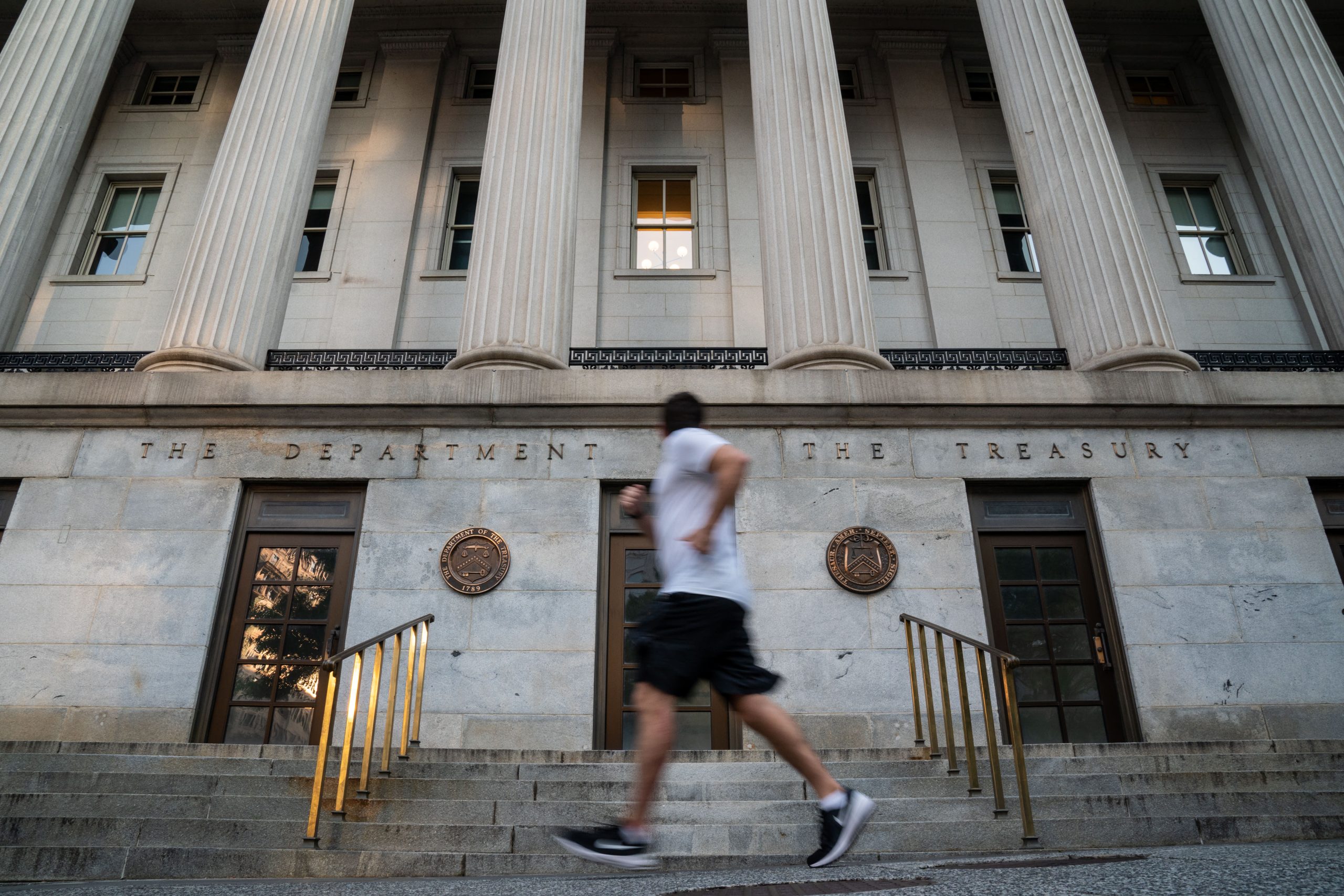Moody’s credit rating down one notch toAa1 from Aaa, the highest possible, citing the growing burden of financing the federal government’s budget deficit and the rising cost of rolling over existing debt amid high interest rates.
“This one-notch downgrade on our 21-notch rating scale reflects the increase over more than a decade in government debt and interest payment ratios to levels that are significantly higher than similarly rated sovereigns,” the rating agency said in a statement.
The decision to lower the United States credit profile would be expected, at the margin, to lift the yield that investors demand in order to buy U.S. Treasury debt to reflect more risk, and could dampen sentiment toward owning U.S. assets, including stocks. That said, all the major credit rating agencies continue to give the United States their second-highest available rating.
The yield on the benchmark 10-year Treasury noteiShares 20+ Year Treasury Bond ETFSPDR S&P 500 ETF Trust
Moody’s had been a holdout in keeping U.S. sovereign debt at the highest credit rating possible, and brings the 116-year-old agency into line with its rivals. Standard & Poor’s downgraded the U.S. to AA+ from AAA in August 2011, and Fitch Ratings also cut the U.S. rating to AA+ from AAA, in August 2023.
“Successive U.S. administrations and Congress have failed to agree on measures to reverse the trend of large annual fiscal deficits and growing interest costs,” Moody’s analysts said in a statement. “We do not believe that material multi-year reductions in mandatory spending and deficits will result from current fiscal proposals under consideration.”
Massive deficit
The U.S. is running a massive budget deficit as interest costs for Treasury debt continued to rise due to a combination of higher rates and more principal debt to finance. The fiscal deficit in the year that began October 1 is already running at $1.05 trillion, 13% higher than a year ago. Revenue from tariffs helped shave some of the imbalance last month.
In its statement accompanying the downgrade, Moody’s analysts wrote that, “If the 2017 Tax Cuts and Jobs Act is extended, which is our base case, it will add around $4 trillion to the federal fiscal primary (excluding interest payments) deficit over the next decade.”
“As a result, we expect federal deficits to widen, reaching nearly 9% of GDP by 2035, up from 6.4% in 2024, driven mainly by increased interest payments on debt, rising entitlement spending and relatively low revenue generation,” Moody’s said. ”We anticipate that the federal debt burden will rise to about 134% of GDP by 2035, compared to 98% in 2024.”
The Moody’s downgrade came as the GOP-led House Budget Committee on Friday rejected a sweeping tax cut package as part of President Donald Trump’s economic agenda, including extending tax cuts first enacted in 2017.
‘Less demand’
“Treasurys are still dealing with the fundamental factor of less foreign demand for them and the growing size of the pile of debt that needs to be constantly refinanced is not going to change, but [Moody’s] is symbolic in the sense that here’s a major rating agency that’s calling out that the U.S. has strained debts and deficits,” said Peter Boockvar, chief investment officer at Bleakley Financial Group.
In early April, Treasury yields rose and the dollar weakened against its global counterparts in reaction to Trump imposing high tariffs on imported goods coming into the U.S., a sign that investors could be starting to move away from the U.S. as the safest place in the world to invest.
“This will make next week interesting,” Fred Hickey, a long-time observer of tech stocks and editor of The High-Tech Strategist in Nashua, New Hampshire wrote on X, calling the Moody’s downgrade a “Friday afternoon (post close) bombshell.” He said to expect the value of bonds and the dollar to fall and the price of gold to rise, in response.
Moody’s officially rated U.S. bonds in 1993 for the first time, but had assigned a “country ceiling rating” of Aaa on the U.S. since 1949.
— With additional reporting by CNBC’s Christina Cheddar-Berk and Scott Schnipper
International: Top News And Analysis
Read the full article <a href="Read More” target=”_blank”>here.


